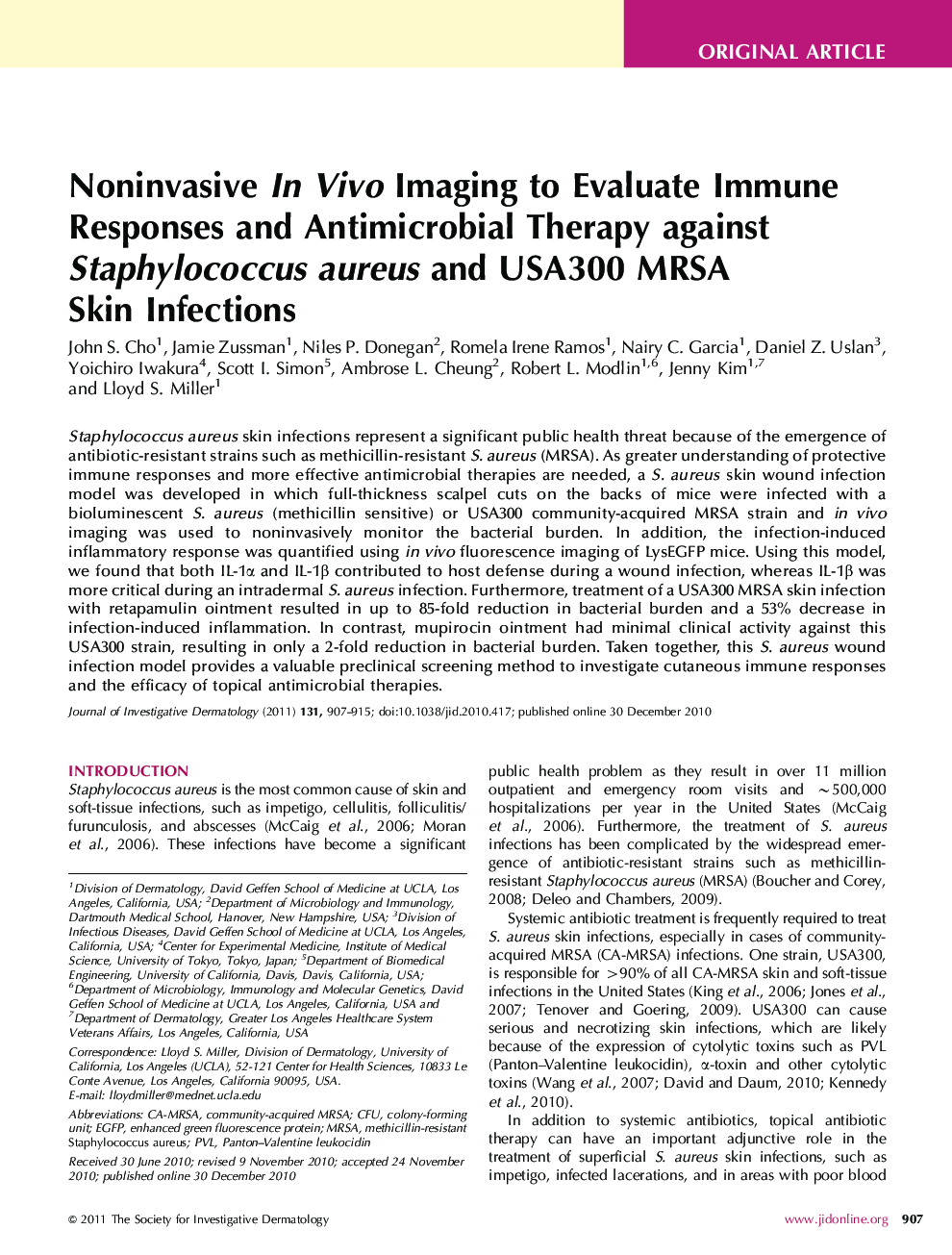| Article ID | Journal | Published Year | Pages | File Type |
|---|---|---|---|---|
| 3216874 | Journal of Investigative Dermatology | 2011 | 9 Pages |
Abstract
Staphylococcus aureus skin infections represent a significant public health threat because of the emergence of antibiotic-resistant strains such as methicillin-resistant S. aureus (MRSA). As greater understanding of protective immune responses and more effective antimicrobial therapies are needed, a S. aureus skin wound infection model was developed in which full-thickness scalpel cuts on the backs of mice were infected with a bioluminescent S. aureus (methicillin sensitive) or USA300 community-acquired MRSA strain and in vivo imaging was used to noninvasively monitor the bacterial burden. In addition, the infection-induced inflammatory response was quantified using in vivo fluorescence imaging of LysEGFP mice. Using this model, we found that both IL-1α and IL-1β contributed to host defense during a wound infection, whereas IL-1β was more critical during an intradermal S. aureus infection. Furthermore, treatment of a USA300 MRSA skin infection with retapamulin ointment resulted in up to 85-fold reduction in bacterial burden and a 53% decrease in infection-induced inflammation. In contrast, mupirocin ointment had minimal clinical activity against this USA300 strain, resulting in only a 2-fold reduction in bacterial burden. Taken together, this S. aureus wound infection model provides a valuable preclinical screening method to investigate cutaneous immune responses and the efficacy of topical antimicrobial therapies.
Related Topics
Health Sciences
Medicine and Dentistry
Dermatology
Authors
John S. Cho, Jamie Zussman, Niles P. Donegan, Romela Irene Ramos, Nairy C. Garcia, Daniel Z. Uslan, Yoichiro Iwakura, Scott I. Simon, Ambrose L. Cheung, Robert L. Modlin, Jenny Kim, Lloyd S. Miller,
